10 simple ideas for neglected or difficult garden areas
We all have ‘difficult garden areas‘ or spaces we want to revamp without re-designing the whole garden.
It may be a corner where nothing wants to grow. Or a space which just seems to attract clutter.
If a shed has rotted or a tree has died, or you want to use the garden in a different way, here are some simple ideas that won’t need any major landscaping.
I’ve re-vamped several corners of my garden over the past few years, so I’m pulling together those ideas, plus ideas I’ve seen in other gardens to inspire you.
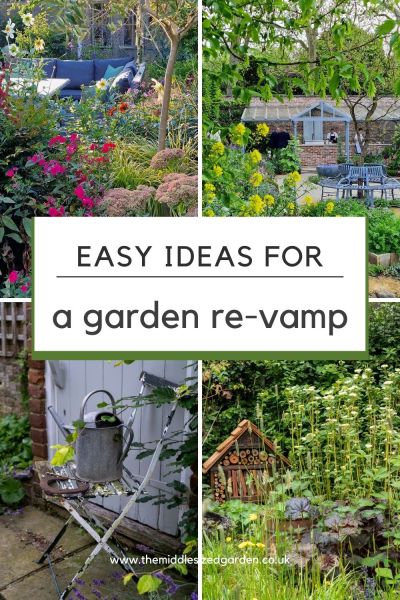
Seating changes your view of the garden
When we moved into this house, our predecessors told us that ‘nothing much works in the north-east facing corner of the garden.’ They started off with a tree, which died.
Then they put a pergola there. But we didn’t use it very often. It became overgrown and shady. Eventually it rotted away, so we thought about what else to do . (See 10 shady garden corner ideas to love (and 2 to avoid!)
These options included a shed, a compost heap, a tree and a border, but we eventually decided that seating was simplest. Depending on whether you have to buy the furniture or not, it can also be one of the cheapest because it doesn’t necessarily need new hard landscaping.
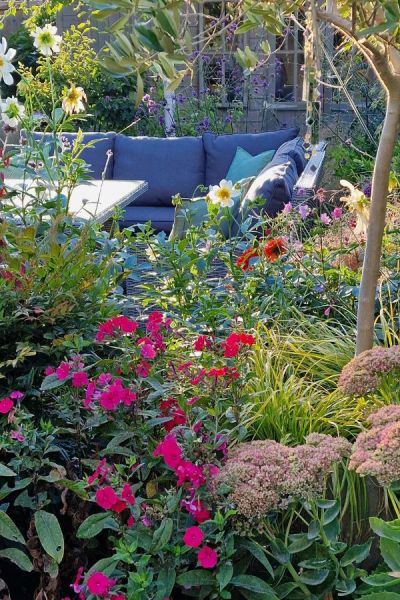
Place seating in a different part of the garden to give yourself a new perspective. This garden was designed by Jane Beedle – see it in the Secrets of Contemporary Garden Design.
Putting seating in a different place means you can look at your garden from a different viewpoint. I really enjoy that aspect of it.
We bought vintage seating from a friend, and had made to measure cushions made up for it.
The advantage of a shady corner is that you don’t need a parasol or awning for the hottest part of the day.
It can be difficult to find the right garden furniture, so if you’re buying new, check out How to Choose Garden Furniture.
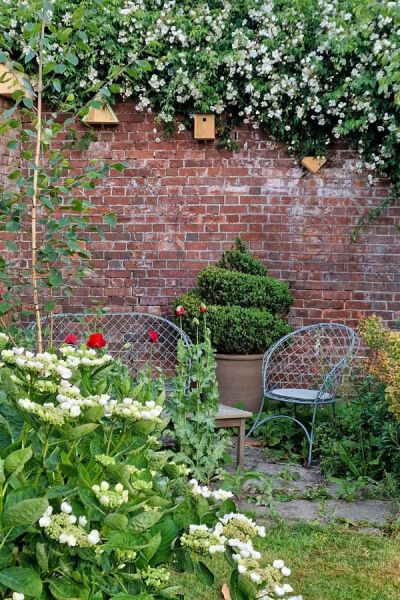
This corner already had pavers left over the pergola, so we just added some vintage seating and kept the rest of it fairly wild. The topiary spiral in a pot used to be in a different part of the garden.
Seating also creates a ‘destination’ or a focal point
Seating can also make a practical area, such as a veg patch, feel like somewhere you can spend time.
The space in front of our sheds attracted a lot of clutter. Pots and discarded items kept piling up, waiting for a ‘clear out’. So I had the clear out.
Then I added a table and two chairs to create a seating area, a place to enjoy the veg garden and a focal point.
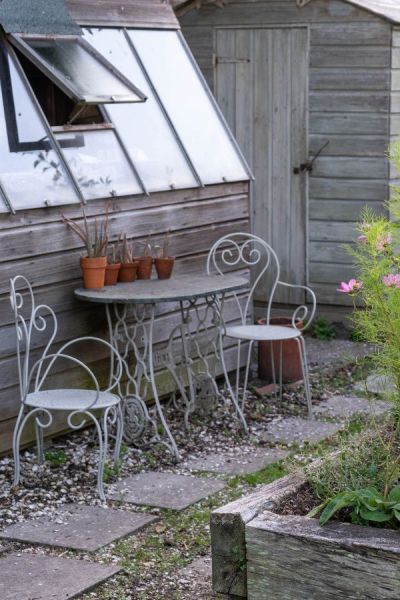
This area used to attract a clutter of pots and plants. Now that there’s a table and two chairs there, it’s an alluring place to sit.
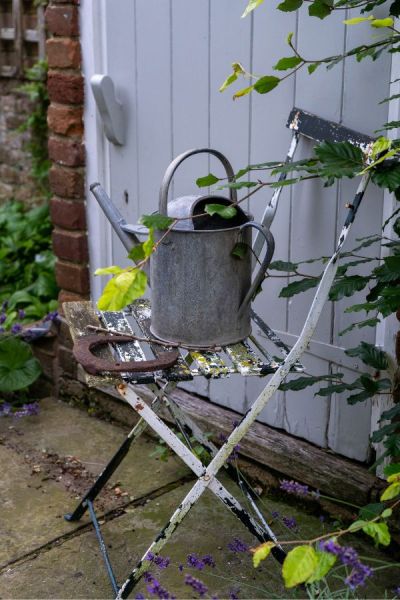
This chair creates a punctuation point – a reason to stop and look – at the top of a path in Sue Oriel’s garden. Sue and her business partner Stephanie grow cut flowers in their gardens for their Country Lane Flowers business.
Move things round to give everything a new look
You can re-vitalise a part of your garden by moving things around rather than always buying new.
The topiary spiral in a pot had been in the centre of the garden. So we moved it to the ‘difficult garden area’ because topiary does well in the shade.
It gives the corner some structure, and the foliage grows more slowly than it did in full sun, so it keeps its shape better.
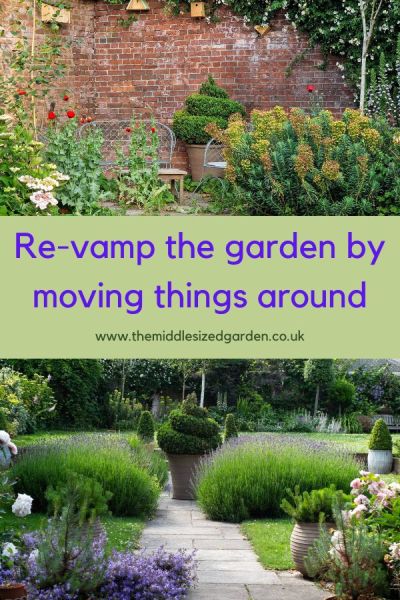
This distinctive topiary spiral was in the centre of the garden. Moving things round is a great way of ringing the changes, and the spiral gives structure to this ‘difficult shady corner.’
We also moved a sundial to a different part of the garden (see further on in this post). And you don’t always have to buy new furniture, you can move what you’ve got to somewhere different.
Leave a difficult garden area to go wild
Last year I never got round to planting up the veg beds. I didn’t weed them either. I did absolutely nothing.
The result was pretty – raised beds full of poppies, feverfew and some self-seeded cerinthe.
Re-wilding is a hot topic at the moment. However, it’s widely agreed that if you just leave your garden to its own devices, then the most aggressive weeds will take over. Brambles and ground elder will out-compete native wildflowers.
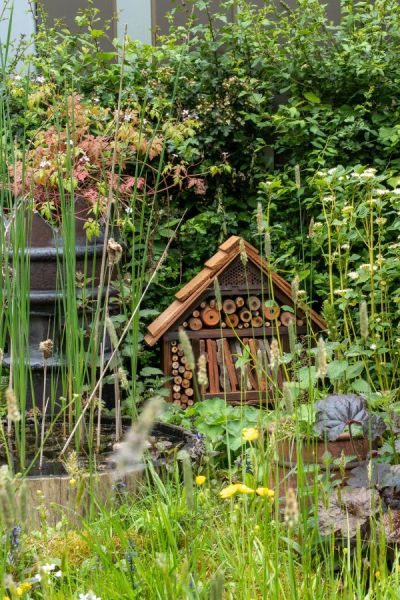
This is a corner at RHS Chelsea Flower Show. A few years ago this would have been left as plain mown edging to a path. By adding a water butt, pond and bug hotel and planting it up with long grass, they’ve shown how a ‘wild’ corner could work. Although it was only there for a few days, wildlife were buzzing round it.
Even the Queen of re-wilding, Isabella Tree, says in The Book Of Wilding that just ‘letting your garden go’ will mean that a few species will overwhelm the rest and the result will damage biodiversity and wildlife, not help it. (note that links to Amazon are affiliate, see disclosure).
But in a limited and defined space – four raised beds – just leaving everything alone for a summer has worked well. It helps that there’s a clear barrier between the ‘wild’ areas and the rest of the garden, created by the wooden sides of the beds. So I never felt it would get out of control. It was also interesting to see what grew where.
And at the end of the summer I pulled up all the weeds.
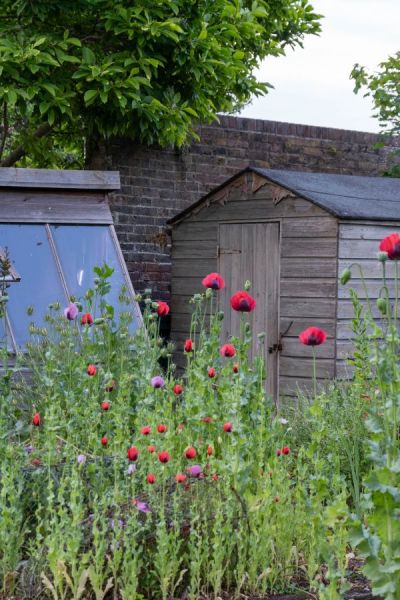
I left these veg beds to grow weeds and self-seeders (an accidental ‘re-wilding’.) It was surprisingly pretty and also interesting to see what naturally grew where. One bed has never grown veg well and it didn’t grow weeds well either!
Or fill a gap with ‘green manures’
However, leaving soil bare attracts weeds. You may not want to see what is going to turn up if you do nothing at all.
‘Green manures’ are plants that improve the soil structure and add to the fertility of the soil.
You buy a packet of green manure seeds (I was gifted a mixed green manure mix and a packet of Phacelia seeds by Thompson & Morgan).
I simply scattered the seeds in late September, after I’d weeded the ‘re-wilded’ veg beds, then raked it over. It took about ten minutes.
The green manures sprouted and are growing slowly over winter, when the weather is warm enough.
When I need to re-plant the borders, I can either cut down the green manures and leave them to rot or I can dig them in.
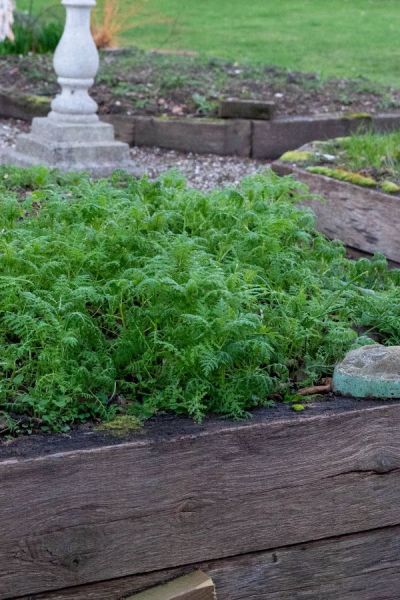
This is the phacelia I grew from seed planted in September. It doesn’t grow fast in cool winters, but it’s looking healthy. You can either cut down or dig in green manures, and you can leave them to flower to attract pollinators.
Ideas for slopes – the most difficult garden areas
A slope is possibly the most difficult part of the garden to plant. If it’s a sunny slope, consider a rockery, however small.
There are tips on how to create a rockery – plus a small garden rockery – in The Rock Garden is Back – and It’s Drought Resistant.
If, however, your sloping area is shaded, then consider creating a stumpery. A stumpery is an arrangement of dead tree stumps and logs. It’s brilliant for wildlife because decaying wood is a natural part of the environmental life cycle. And you get to enjoy the natural sculptural shapes of tree stumps, with bulbs and alpine plants wedged into the crevices. Find advice on how to create a stumpery here.

Even a small sloping area can be transformed by turning it into a rock garden or stumpery. The top photo shows a mix of tree stumps and hostas, while the lower pic is a Japanese-influenced rockery. Both the tree stumps and rocks will help keep soil in place and will give you ‘planting pockets;, stopping water from washing the soil away. See here for How to Plant on a Slope.
Turn a practical area into somewhere special with a focal point
Traditionally people have hidden the veg patch away. My veg growing area has always attracted clutter because I didn’t think about how the area looked, just about what I was going to grow in it.
But with smaller gardens every bit of space is precious. So we decided to make the veg patch a beautiful place to be. That’s very on trend at the moment, but it’s also a way of enjoying your garden more.
At this year’s Chelsea flower show, the Savill’s Garden Kitchen by Mark Gregory positioned the kitchen and veg growing at the heart of the garden.
To make a veg patch feel like a proper garden, it needs a focal point. So we took the sundial that we had had in the centre of the garden and put it at the centre of the raised beds. We had to cut an angle off a corner of each raised bed so that we could walk past the sundial. I’m pleased with the result.
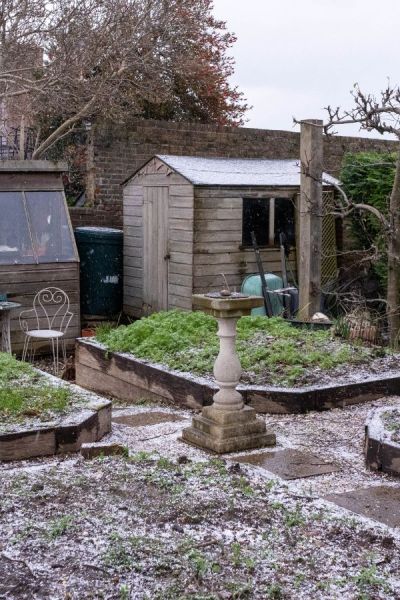
Putting the sundial in the centre of these veg beds gave it a focal point and instantly made the area feel more special.
I may go on growing veg in these beds, or I could turn this into a cottage garden, a cutting garden or try the re-wilding again.
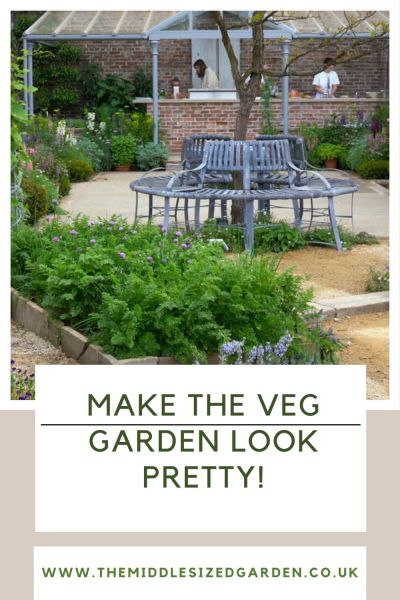
At the RHS Chelsea Flower Show last year, this garden by Mark Gregory for Savills placed the kitchen garden at the heart of the garden in the same way that the kitchen is at the heart of the home.
Add a ‘grand’ element to a working area
Along a similar theme, adding ornaments, sculpture or surprisingly grand elements can make a working part of the garden feel and look like something special.
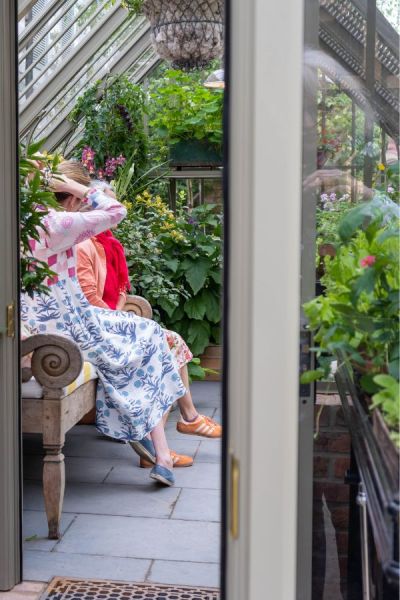
A greenhouse is usually considered a practical area, but add a chandelier, an unusual hanging pot or a stylish bench to turn it into something special. This is an Alitex greenhouse at the Chelsea Flower Show.
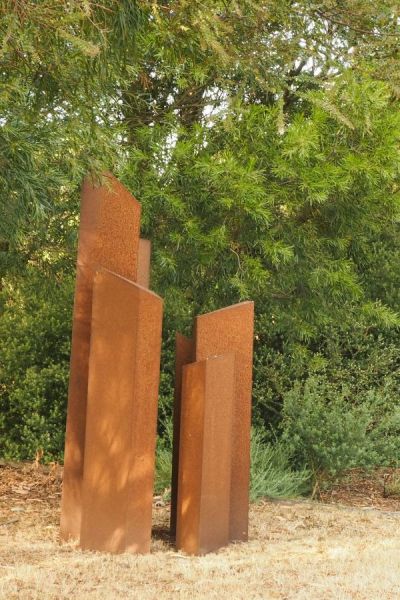
A garden sculpture made of cut pieces of corten steel. The owners of this garden have some beautiful pieces of sculpture, but decided to give definition to this nondescript corner by having sheets of corten steel cut into different sizes and placing them as sculpture. You can see more ideas from this garden in 7 garden design ideas from 4 private gardens.
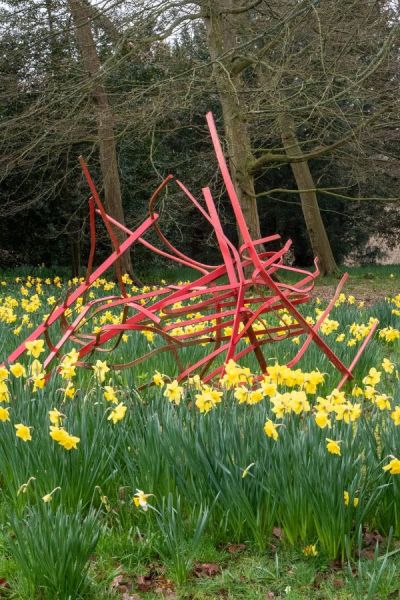
This ‘sculpture’ at Doddington Place Gardens in Kent was a piece of the garden’s metal fencing. A car crashed into it, so rather than throwing the twisted steel away they painted it red and placed it as a focal point in a piece of open ground.
A pot of paint can work wonders
If you want to make a cluttered area look better, then get out out the paint. Painting a shed and a fence the same colour, for example, can ‘lose the shed’.
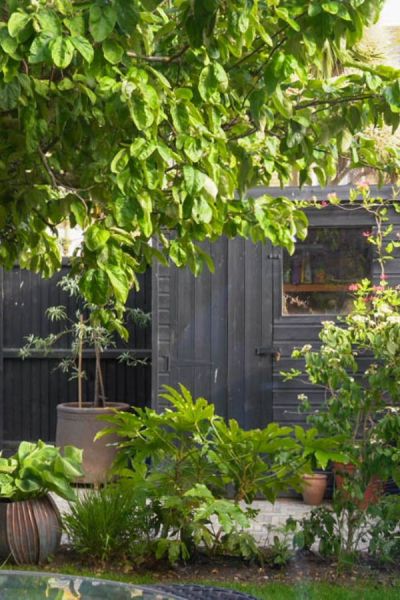
Paint the shed the same colour as the fence. Here this ordinary shed is looks chic when painted black and it also ‘disappears’ into the fence. This garden was designed by Posy Gentles.
This is the second part of a two-part series. The area of your garden closest to the house is the one you’ll see the most, so there are some good principles to consider. Find them here in 10 beautiful garden ideas.
And if you love to stroll around gardens in video, then don’t miss this one! It gives more views of the gardens we’ve mentioned.
Pin to remember ideas for difficult garden areas
And do join us – see here for a free weekly email with more gardening tips, ideas and inspiration.
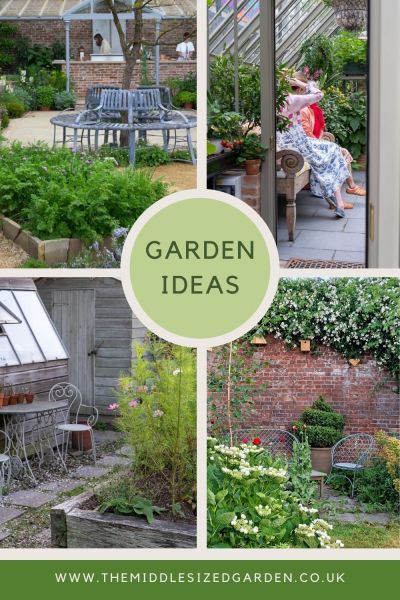

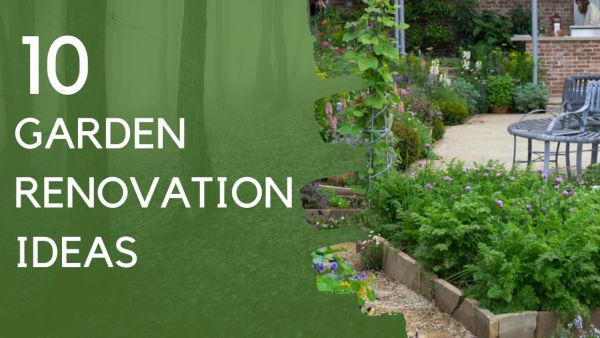























You make a great explanation about wanting to revamp a difficult garden area without redesigning the garden. Seating changes your view of the garden. A little detail on this would be great. Also, your blog is inspiring. Thank you so much.
Thank you so much!